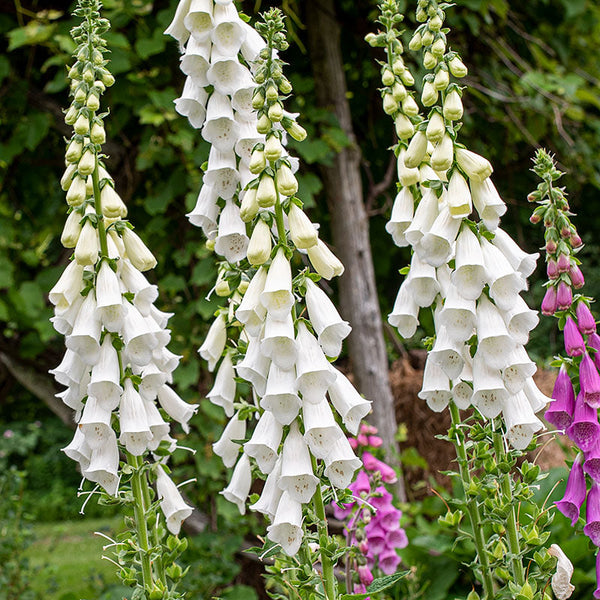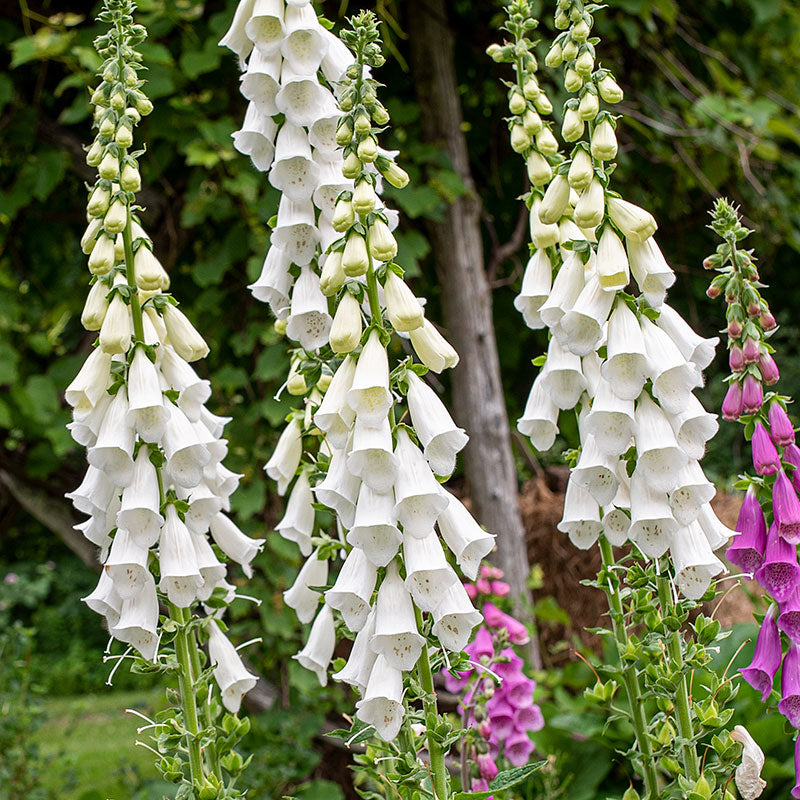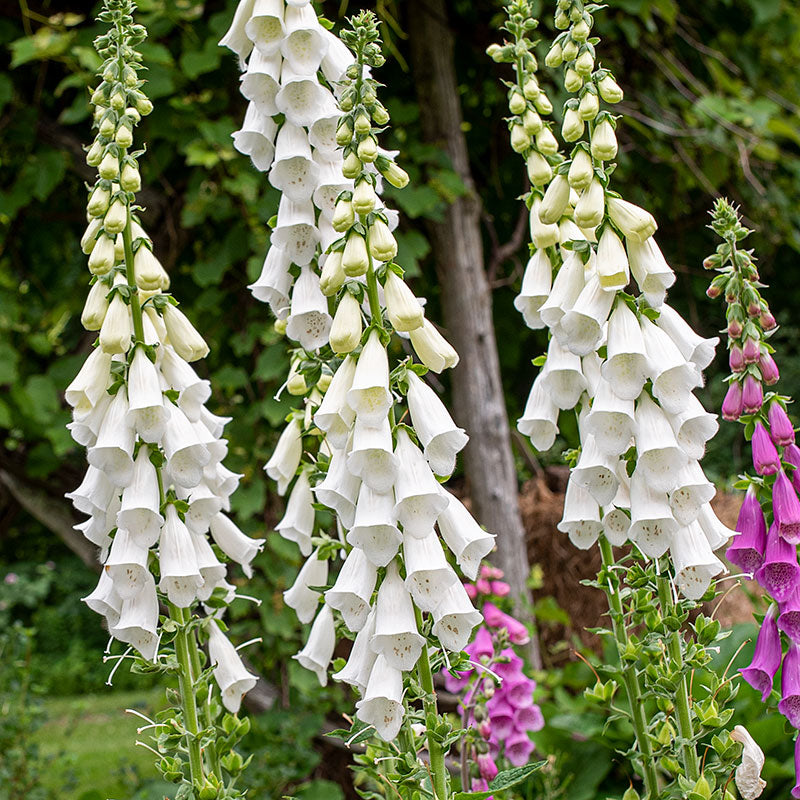SOWING INSTRUCTIONS
Depth:
Surface sow and press in lightly; requires light to germinate.
Starting Indoors:
10-12 weeks before last frost, sow in germinating mix; covering flat with humidity dome to retain moisture while seeds germinate. Keep at 60-65°F.
Starting Outdoors:
After last spring frost until early summer surface sow in a location with full sun. Part shade is best in hot summer locales. Will bloom the following year. Or sow in a nursery bed in June, transplanting to final spot in fall or early spring on a cloudy day. Do not allow seedlings to become crowded, transplant 6-8" apart when true leaves form.
PLACEMENT & CULTIVATION
Foxgloves are enchanting woodland edge flowers where they shine against the greenery and impressive exclamation points in flower-filled June borders. Deer avoid it, bees love it, and they last well in bouquets if cut when just opening. Cut back the flowering spike partially after bloom to encourage any side shoots to develop and bloom. Deadhead after flowering ceases to decrease self-sowing and increase their perennial tendencies, leaving a stalk to drop seed on bare ground and renew plantings. Avoid locations that are wet in the winter for best overwintering success. Poisonous if eaten. Use gloves and caution when handling.
Watering Details:
Water regularly—1" per week, more during particularly dry spells. Keep evenly moist, never saturated nor too dry for the best growth and flowering.
Soil pH:
Acidic to mildly alkaline.
Fertilizer:
Mix about 2" of compost into the soil at time of planting, and top-dress next spring with about 1".
Diseases & Pests:
Slugs can be troublesome. Prevent damage by sprinkling iron phosphate pellets on the ground around the plants during favorable conditions for slugs. Avoid powdery mildew and leaf spot with proper spacing in a location that has good air circulation.
When to Cut for Bouquets:
Harvest when about half of the florets are open.
































